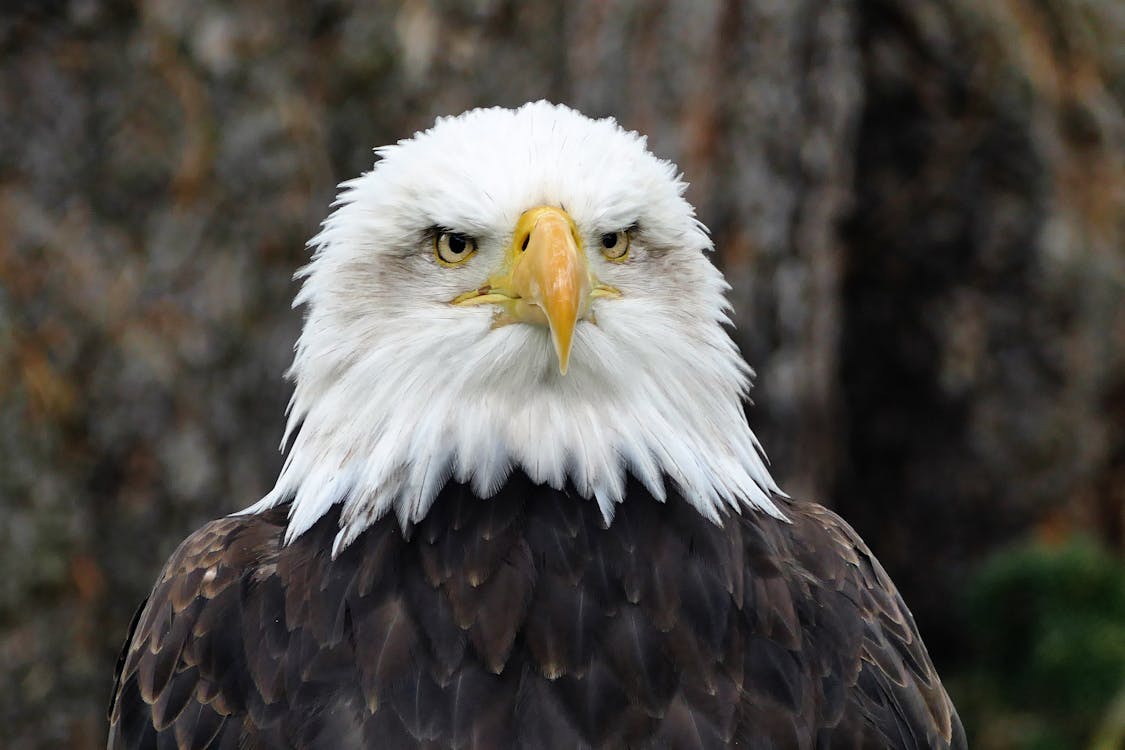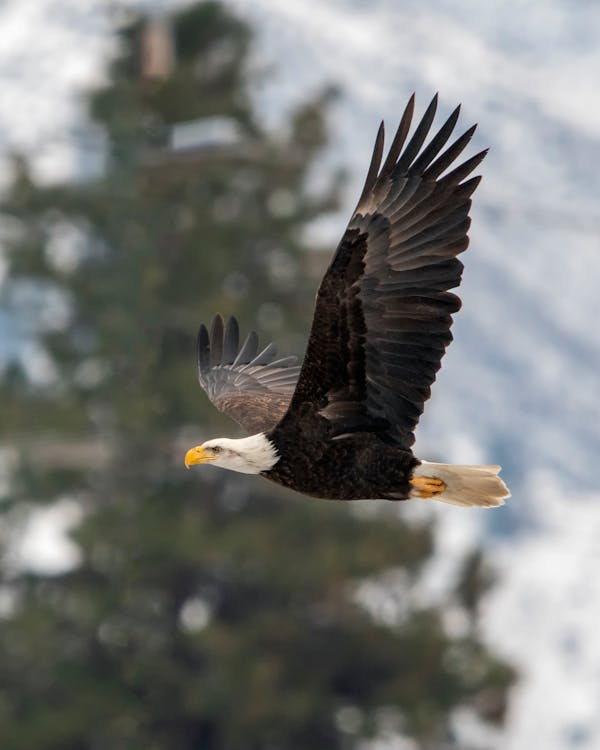The bald eagle is a majestic bird of prey and the national symbol of the United States. With a wingspan that can reach up to 7 feet and a weight of up to 14 pounds, it is one of the largest birds in North America. This article will explore the biology and ecology of the bald eagle, as well as its cultural significance and conservation status.
Biology and Ecology
The bald eagle (Haliaeetus leucocephalus) is a member of the Accipitridae family, which includes hawks, eagles, and kites. It is easily recognizable by its white head and tail feathers, contrasting with its dark brown body. Bald eagles have a hooked beak and sharp talons, which they use to catch and eat fish, birds, and small mammals. They are also capable of scavenging, and will often feed on carrion.
Bald eagles are found throughout North America, from Alaska and Canada to northern Mexico. They prefer to live near large bodies of water, such as lakes, rivers, and coastal areas, where they can find an abundant source of food. They build their nests in tall trees or on cliffs, often near the water. Bald eagles are monogamous and mate for life. They lay one to three eggs per year and both parents take turns incubating the eggs and caring for the chicks.
Cultural Significance
The bald eagle has been a symbol of the United States since 1782, when it was chosen as the national emblem. Its image can be found on the Great Seal of the United States, as well as on coins, stamps, and other government documents. The bald eagle represents strength, courage, and freedom, and is often used to promote patriotic and nationalistic sentiment.
Conservation Status
Bald eagles were once in danger of extinction due to habitat loss, hunting, and the use of pesticides, which contaminated their food supply. In 1967, the bald eagle was listed as an endangered species under the Endangered Species Act, which provided legal protections for the bird and its habitat. Through conservation efforts, including the banning of the pesticide DDT, the bald eagle population has rebounded. In 2007, it was removed from the endangered species list, and its conservation status was changed to threatened.
However, the bald eagle still faces threats from habitat loss, pollution, and human disturbance. As such, it remains protected under the Bald and Golden Eagle Protection Act and the Migratory Bird Treaty Act. The U.S. Fish and Wildlife Service also monitors and manages bald eagle populations and habitats to ensure their continued survival.
Conclusion
In conclusion, the bald eagle is an iconic symbol of America that has a long and storied history. Once facing the threat of extinction, the bird has made a remarkable recovery thanks to conservation efforts and increased protections. Today, the bald eagle population is thriving, and the bird remains an important symbol of freedom, power, and resilience. As we continue to protect and conserve this magnificent bird, we ensure that it remains a vital part of our natural heritage and an enduring symbol of the American spirit.



Comments
Post a Comment